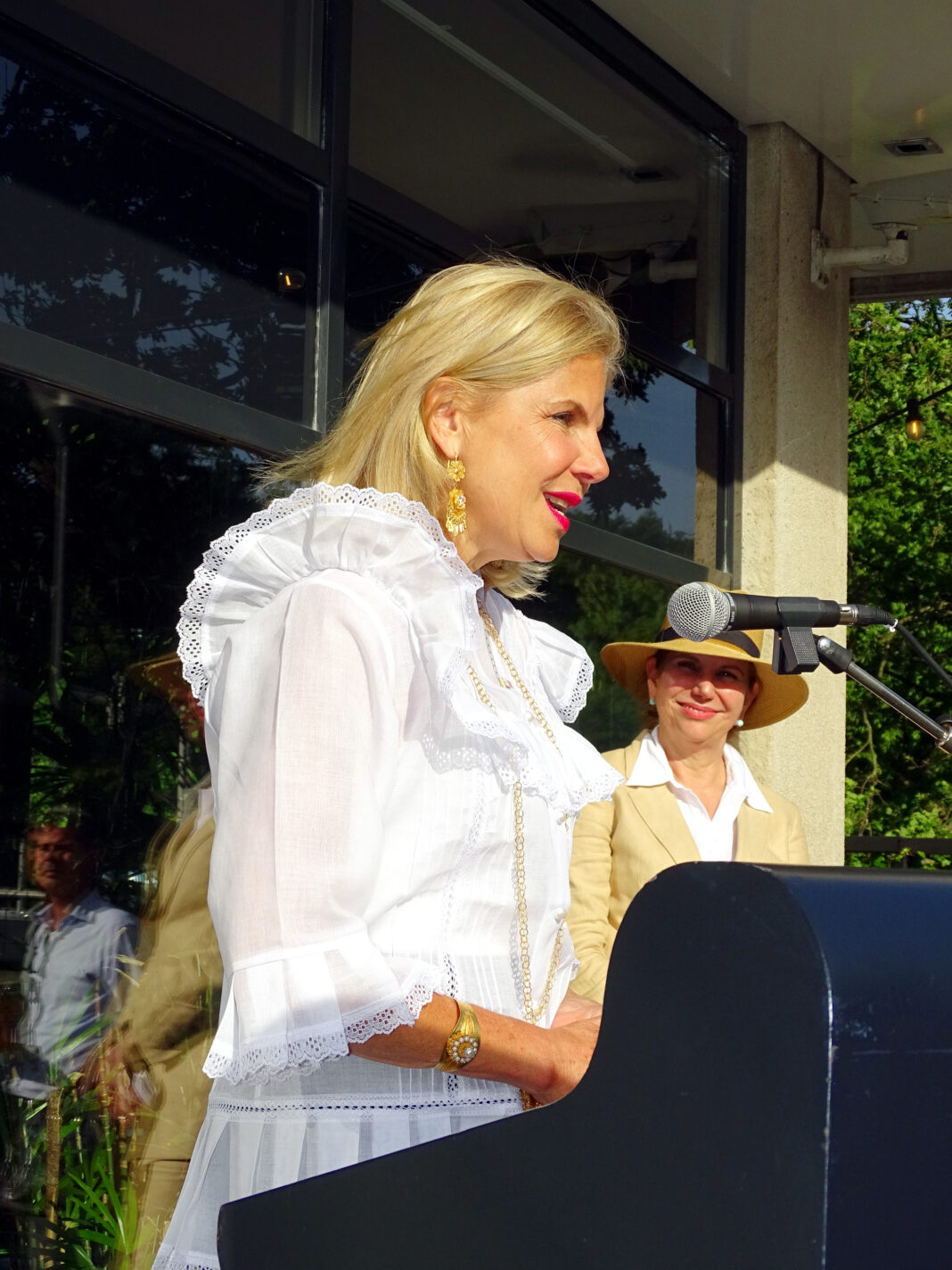8 of January, 7th and 9th of February, 2024
Special series of Events by the Embassy of Panama
The Ambassador of Panama, H.E. Ms. Elizabeth Ward Neiman, started a unique national promotional program under the theme of Panama National Dress, “La Pollera”. With a small population of only 4.2 million inhabitants, the central American nation is invariably proud of having what is considered to be one of the most beautiful and costly national dresses in the world and ambassador Ward decided to share it with the Dutch society.
Panama is known primarily for its mix of races and exuberant nature; its rich gastronomy; its ultramodern city and historic center; as a top international business and finance center; and as an air, maritime and digital hub leading to an internationally well-known logistic center being one of the best-connected countries in the world. Less known is that it is one of the three carbon negative countries in the world.

On the 8th of January, at the International Women Club, the 7th of February at Instituto Cervantes of Utrecht, and 9th of February at The Arts Society The Hague are a series of events hosted by the Embassy of Panama in collaboration with the mentioned prestigious cultural entities.
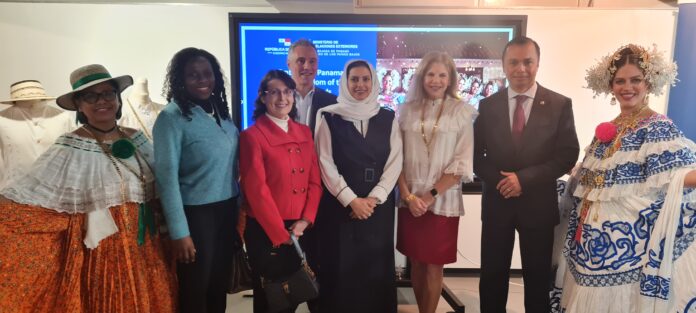
During each event, H.E. Ms. Elizabeth Ward Neiman is delivering a presentation on ´The Pollera’, the traditional national dress of Panama, worn by women primarily during folkloric and cultural festivities to honour the Panamanian heritage and traditions.
The art of producing these hand-made dresses and transferred from one generation to the next, is making a comeback due to increased efforts by the government which are explained during the presentations. It takes several years and multiple artisans to make one of the gala polleras, thus making them very costly!
The pollera has undergone evolution throughout the years but its origin dates to the time of the Spanish conquest dating from the traditional Spanish peasant dress of the 16th and 17th centuries. “At that time, it was the women´s daily attire; very simple, normally white with floral embroidery and used in mild climates and areas such as in Andalusia with harsh climates in summer season. In Panama, the pollera, which translated means “skirt”, refers to the set of shirt and skirt and is used in festivities denoting nationalism and folklore as well as on special occasions.” explained Ambassador Ward to the attendees.
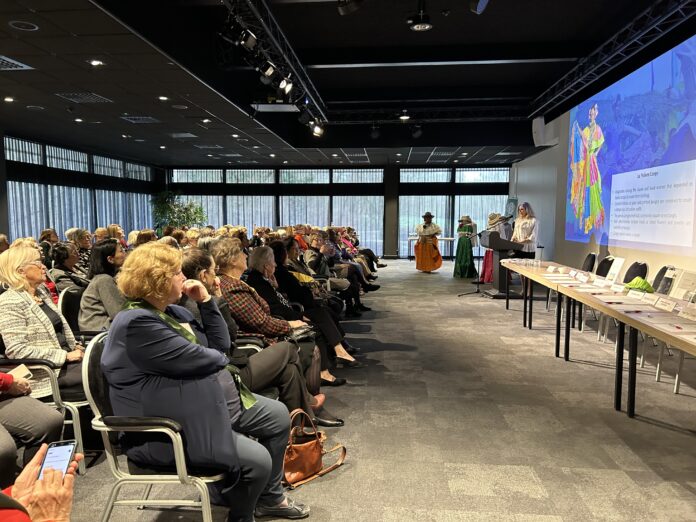

There are 28 varieties depending on the region where it is made. The style of pollera would determinate the type and quantity of jewelry and hair pieces worn, which can range from fresh flowers and wooden beads to extravagant tembleques and numerous gold chains. “The more casual pollera, the Pollera Montuno, referring to the mountains where the women would come from, is plainer and straighter and is made from a certain type and quantity of inexpensive fabric. There are several types of montuno polleras. They are used during the carnival, folkloric parades and rural events like the rice shelling,” she explained while a model walked to the scenario to demonstrate it.
The Pollera Congo, originated among the slaves and black women that were dependent on fabric scraps to make their clothing resulting in a colorful mix of plain and printed designs sewn together in geometric patterns. Added, were fresh or dried flowers as hair ornaments and jewelry made out of a variety of beads or wood. The fancier, Pollera de Gala, also has several varieties. One is the totally white dress and used on very special occasions, such as weddings. However, the maximum plus ultra is the Pollera de Gala Zurcida Calada. It is the most elaborated and costly of all polleras; hand made of imported fine white linen fabric and French or Belgian lace, with colored intricate unique embroidery with takes from three years and up to make it. Many artisans work together and combine their unique contributions before being stitched together to finalize the confection of the dress. The dress is enriched with braids and laces and the colors are chosen by the proud new owner as she orders her dream pollera.
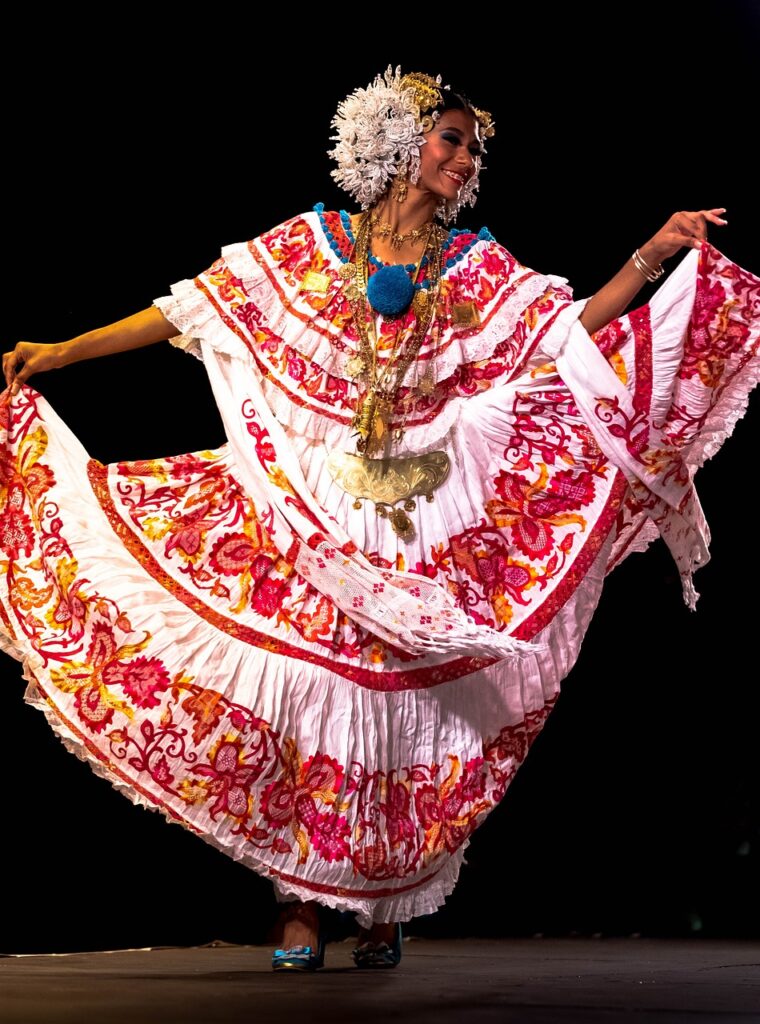
An equally important part of the gala pollera are the head accessories called Tembleques (The term comes from the movement of the pistils of the flowers, as they should move when dancing). They are made of pearls, crystals, and other materials. Between 12 and 14 pairs of Tembleques, depicting flowers and garden animals, should be placed symmetrically on the women´s head depending on the size of the woman and the year the pollera was made. Gold jewelry, as well as matching colored motta, ribbon and shoes complete the full gala pollera dress.
While choosing the headdress adornments as well as the gold jewelry, certain rules must be respected to maintain the tradition of the pollera. There are specific types of gold earrings and other golden jewellery, consisting of seven to twelve gold necklaces each with a specific name and meaning holding different symbols of Catholicism, bracelets and rings.
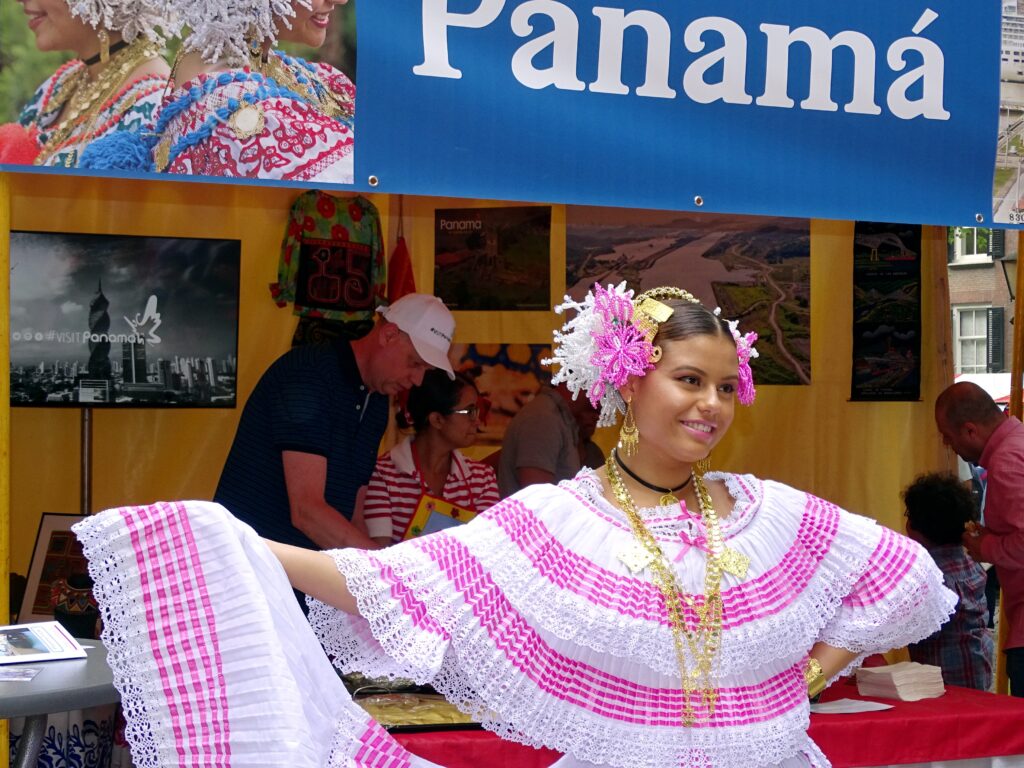
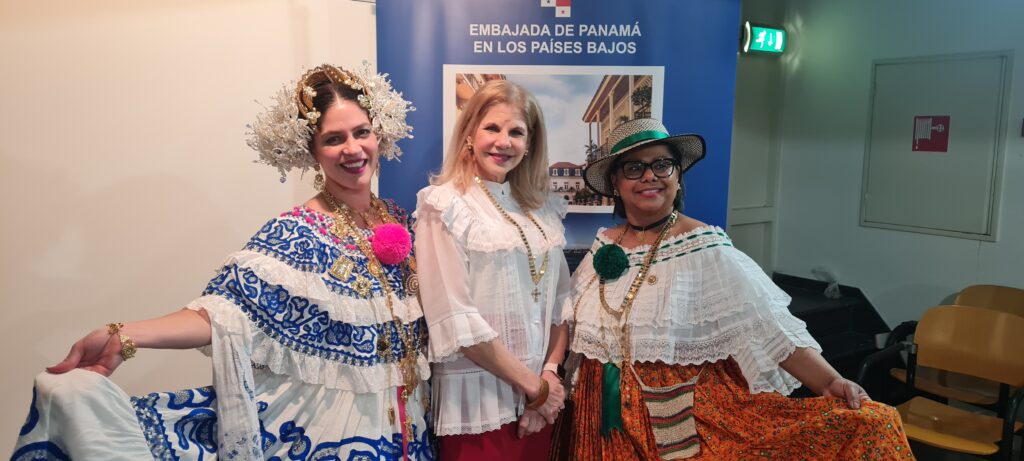
The national parade, Desfile de las Mil Polleras, is organised every year in January by the Panama Tourism Authority to promote Panamanian cultural heritage through the pollera of each region, made by people dedicated during the year to the special artisanal work. This year it was celebrated on the 13 of January in the city of Las Tablas and it exceeded 20, 000 parading women in polleras and 250, 000 people in attendance.
After Ambassador Ward Neiman´s fascinating presentation, drinks and canapés were served.

